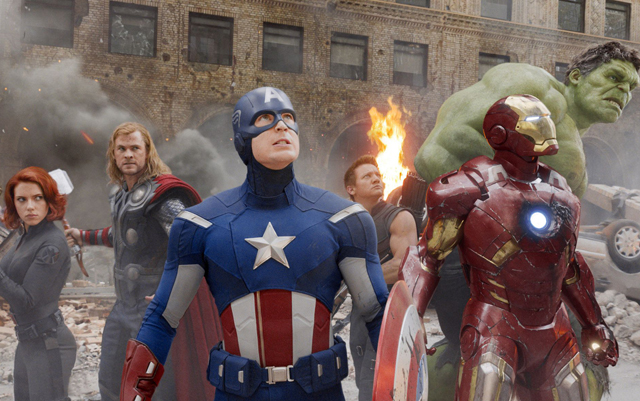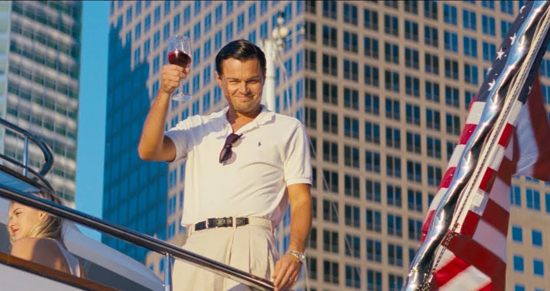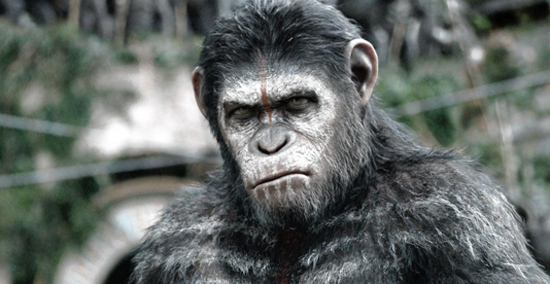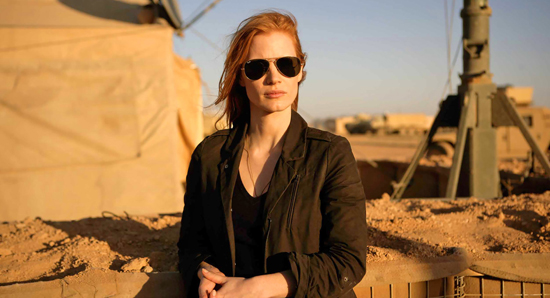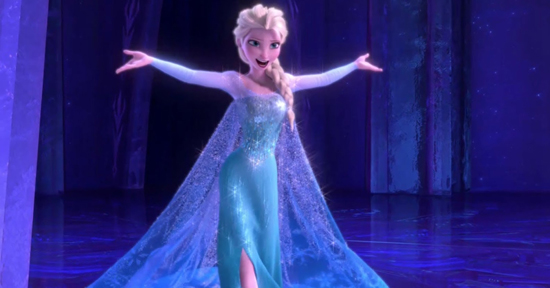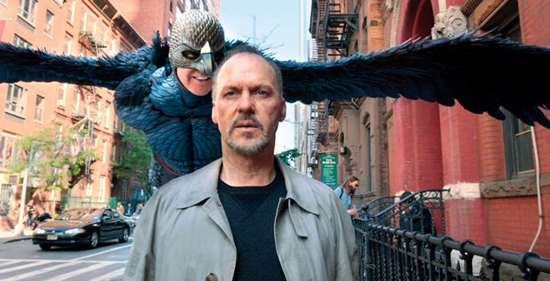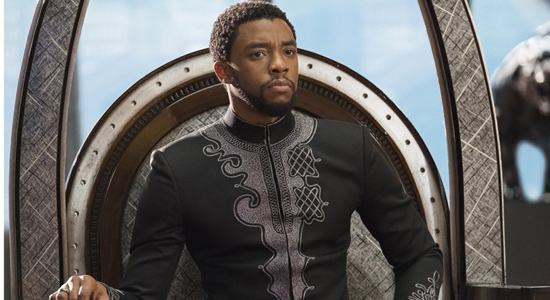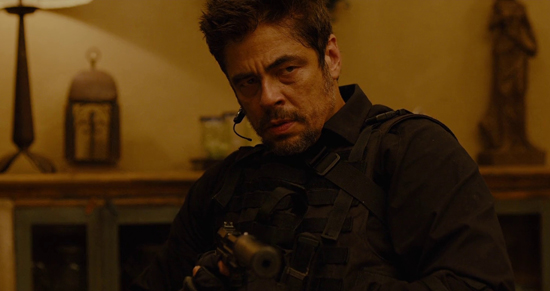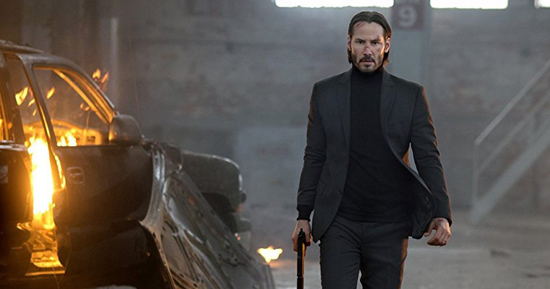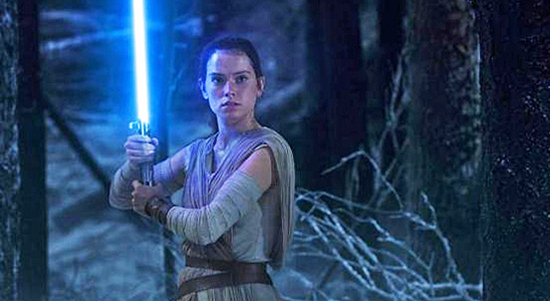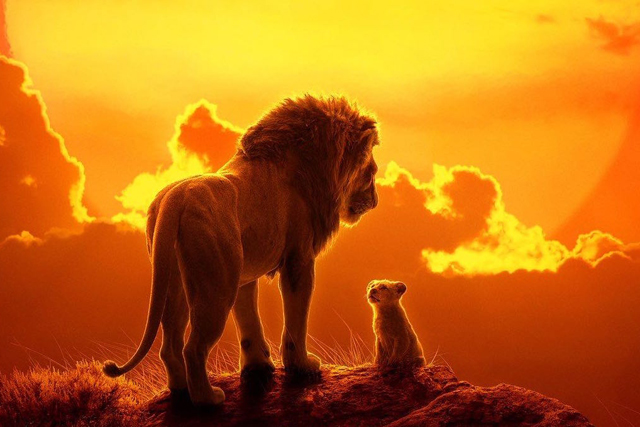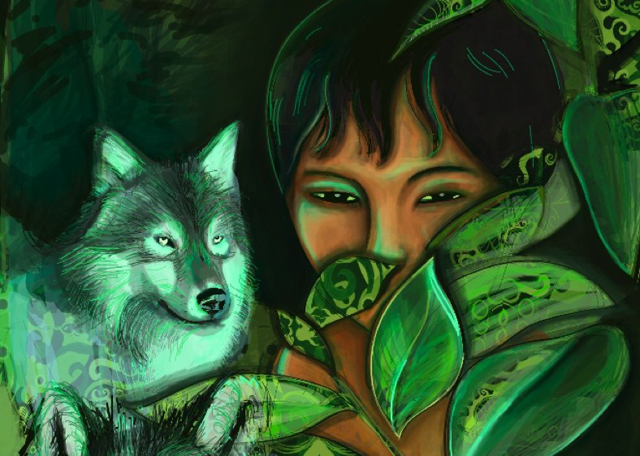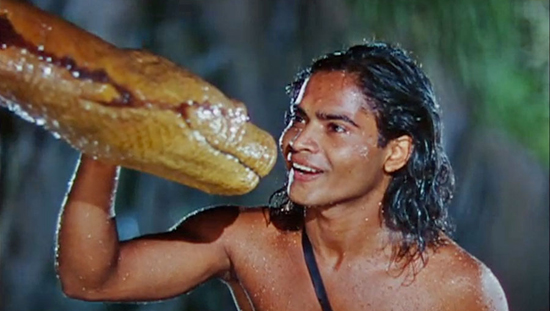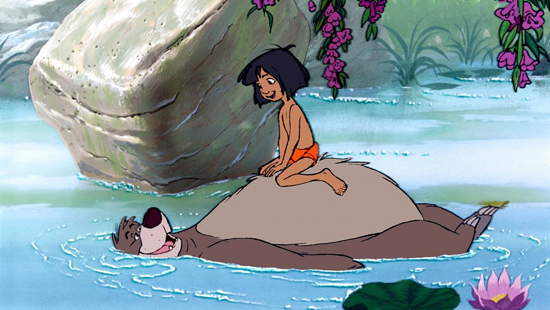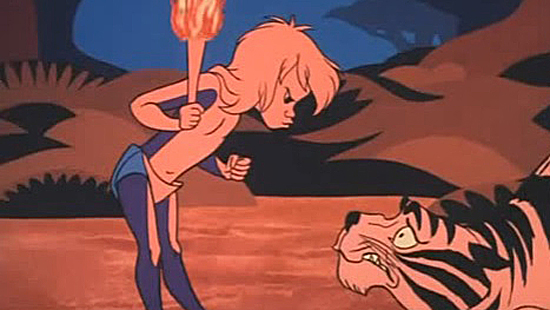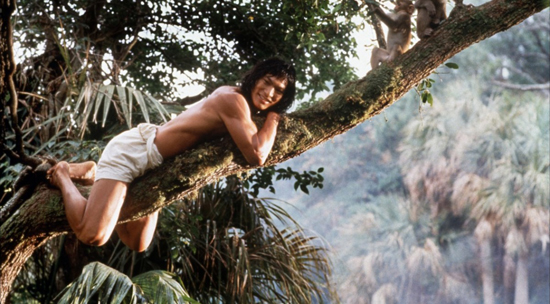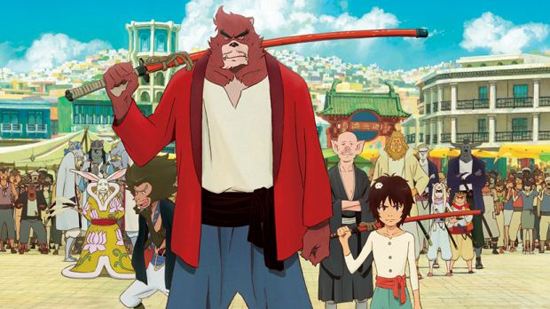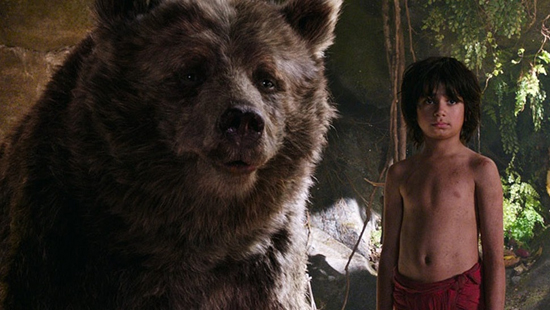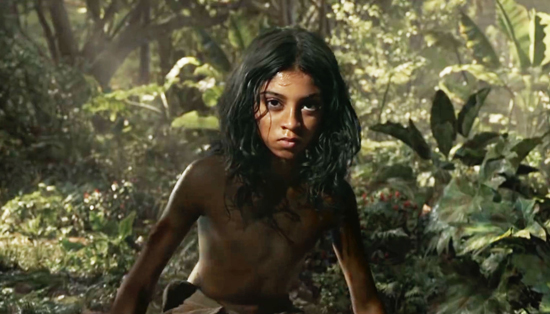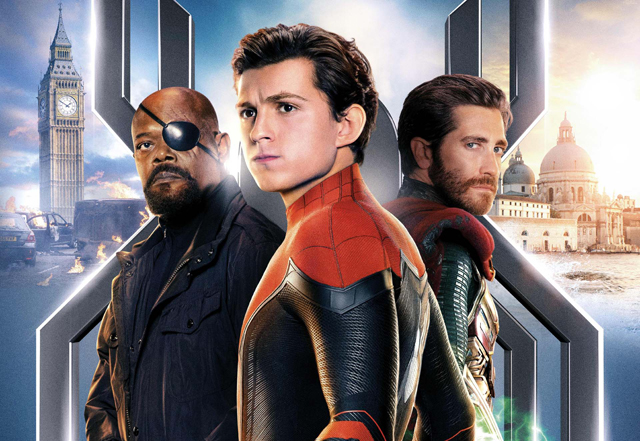
The magic of Disney returns once again to the Anaheim Convention Center, and it only continues to get bigger with every passing year. Since the last Expo in 2017, Disney has broken new records at the box office, opened up their largest theme park expansion ever, and has acquired an entire movie studio as part of the largest media merger in history. The addition of 21st Century Fox as a part of the Walt Disney Company in particular has been the most monumental change in the last 2 years, and it should make for an interesting showcase over the next few days as Disney lays out what lies in the near future for the company. In years past, the focus has largely been on giving the Disney fans a chance to fully explore all the many facets of the Disney company in a fun and informational environment. Every time, more and more of the expansive Anaheim Convention Center gets utilized and Disney has even more to show off this time around. I have tried my best to get in all the major sights of the Expo, with a particular emphasis on catching the major announcements made throughout the 3 Day event. This year, Disney introduced the somewhat controversial addition of advanced online reservations for this year’s Expo. Naturally, like buying tickets for a midnight showing of Avengers: Endgame, the online registry was flooded with passholders hoping to get one of those coveted seats, and many people unfortunately were left out. I myself ended up missing out on reservations for the shows I really wanted, but there’s still the standby queues available, so much of my upcoming Expo experience will probably involve waiting in long lines. At least I’m not as focused on waiting in line for merchandise or talent signings; it’s all panels and booths for me, so hopefully I can plan it all well enough to enjoy my time there.
This will be my 4th overall D23 Expo. Again, like the last two, I will be spending all 3 days there. I hope to have daily updates loaded onto this site for all of you to read, hopefully with plenty of pictures as well. It’s going to be a hectic couple of days, but I will spend any moment I can to write down my thoughts about all the experiences I will have during the Expo. After having gone through this 4 times now, my hope is that I’ve become an expert navigator through the convention experience, but who knows how much the online reservations added this year will have an effect. In any case, as a lifelong Disney fan, I am extremely excited to see what awaits all of us behind those convention floor doors. Please enjoy my following day by day chronicle and let’s all take a look at this wonderful world of Disney on display at D23 Expo 2019.

DAY #1 (AUGUST 23, 2019)
If there is one thing that the last three Expos has taught me, it’s to be prepared, and very much so. Given how I didn’t know what effect the online reservations might have, I prepared myself to be extra ready for all the stuff I wanted to see and possibly even guard myself for some disappointment. As such, I left my hotel room extra early, at around 3:30 in the morning to be exact, and made my way to the Convention Center. This was already a smart decision as there was no wait at the security checkpoint. Once through the metal detectors, me and the other guests were directed down to the Convention Center’s entry. Out front, we were greeted by the first major photo spot for attendees to pose in front of; the expo logo spelled out in giant 3D letters, which looked really great with the Convention Center facade in the background. Those of us who came this early were taken down to the Center’s Hall E, which is located in the basement. I’ve already had many hours spent in this spacious hall from past Expos, and once down there, we were all split into groups; those of us who wanted to attend the first show of the Expo (the Disney Legends induction ceremony) or those who wanted to be the first ones through the doors into the Expo show floor. Because my goal was to attend the second big show of Day 1 (the Disney+ presentation) I opted to go to the show floor queue instead of Legends. Already, I could tell that 10 years of Expos has improved Disney’s crowd control performance, as the many swaths of people were expertly escorted upstairs and formed into nicely organized rows once it came time to open the doors. So, for the first time ever, I managed to walk into the show floor right at the stroke of 9am, already making me feel happy that I planned well ahead.

And first impressions of the show floor were very positive. Disney has thankfully found the best ways to lay out all their many different booths to fill up all the available space within the show floor. One thing that really stuck out right away was the enormous push that Disney was going to put on their streaming platform that launches in November; Disney+. Located very near the center of the entire open show floor was the massive Disney+ booth. The Disney+ set-up included a stage at it’s center with kiosks lined up at it’s front, flanked by costume displays for two of the platform’s most anticipated launching programs (the Star Wars series The Mandalorian and the Lady and the Tramp remake) and demo rooms on either side of the stage. This booth was clearly built to be the star attraction of the show floor. The stage was there to host both demonstrations as well as interviews with special guests. There was even a special press balcony located over one of the demo rooms for even more space to conduct special press coverage and interviews throughout the day. The kiosks out front were there for guests to take advantage of a special offer. Just for guests at the Expo, they would be able to sign up for 3 years of Disney+ for a 30% discount (roughly $4 a month) and in turn they would be made part of what Disney calls the Founders Circle, which got them an exclusive pin as a reward. Just around the corner and on the backside of the Disney+ booth, were two other streaming platforms already available through Disney and are going to be available as part of a bundle with Disney+ in November; Hulu and ESPN+. Hulu’s booth featured artifacts from some of their exclusive programming on display (The Handmaid’s Tale and Castle Rock), while ESPN had sports memorabilia, including an entire wall devoted to the history of sneakers.



Being one of the first on the floor, I decided to take advantage of the short lines that would no doubt fill to capacity in an hours time. Just so I could get it out of the way, I went over to this year’s Walt Disney Archives exhibit. In past years, the Archives have displayed incredible artifacts from their vaults, like a collection of ride pieces from Disneyland attractions of the past, or the last Expo’s incredible exhibit devoted to Pirates. This year, the exhibit was devoted to costuming, and in particular, they had it focused on Disney heroes and villains. Dubbed Heros & Villains: The Art of the Disney Costume, this sprawling gallery contained original film used costumes from across the entire history of live action Disney films. The first room, which worked as a bit of an introduction, was devoted to spotlighting some of the designers who have contributed to the Disney films that were going to be represented in this gallery. Theses included Oscar winners like Sandy Powell and Coleen Atwood, who’s dresses for movies like 2015’s Cinderella and 2010’s Alice in Wonderland. This space also replicates what their offices probably look like, with the results of their work (the costumes themselves) sitting within the center of the rooms. After the introduction, the exhibit opens up into a wide open floor with the costumes lined up all along the walls. From here, you will find costumes ranging from the witches dresses worn by Bette Midler, Sarah Jessica Parker and Kathy Najimy in Hocus Pocus (1993); Tim Allen’s Santa outfit from The Santa Clause (1994); a dress worn by the legendary Bette Davis in Return to Witch Mountain (1978); and most prominently, many of the costumes from the several recent Disney remakes like Beauty and the Beast (2017) and Aladdin (2019). Some of the most interesting sections of the gallery include a corner devoted to Mary Poppins, with the famous grey coat and flower hat worn by Julie Andrews in the original, flanked by two new dresses worn by Emily Blunt in the recent sequel. There was also a large section devoted to the character of Cruella De Vil, with several dresses worn by Glenn Close in the 1996 remake of 101 Dalmatians on display. In addition to the costumes, there was also the Cruella De Vil limousine from the movie sitting in the corner, which was one of the largest props put on display here, along with the golden pumpkin coach from the Cinderella remake.




After visiting the exhibit and getting my first look at this year’s show floor, I made my way back to the lobby to get ready for my top priority for this first day; seeing the Disney+ presentation in the expansive Hall D23. Interesting enough, this afternoon slot on the Expo schedule used to go to the Animation Studios presentation, which this year got lumped together with the live action studios for the Disney Studios presentation on Saturday. This once again shows how much Disney wants this Expo to spotlight their upcoming streaming platform. The last of Hall D23’s standby for the Disney Legends were just getting seated around 10:30am, a half hour into the show, and then they finally opened up the line for those of us who were waiting for Disney+. We were escorted down to Hall E in the basement, where the line was again split up into separate queues. Being a D23 Gold Member, I was able to line up in a priority queue just for Gold Members, and since I was early enough, I was nearly at the front of the line. I still didn’t know if it was a guarantee of having a seat, but to my incredible delight, Gold Members were seated even before those with online reservations. As a result, once they started letting us in after a couple hours of waiting, I was able to get a fairly good seat. Albeit, I was in a line for Section A, which is off-center from the main stage, but my seat put me fairly close to the screens that would be displaying all the exclusive footage. Surprisingly, we were allowed to have our phones out for this show to capture the moments on stage as they happened, though security were around to stop people from video taping the exclusive footage.



So, to start of the show, we were treated to a live stage performance by the cast of the upcoming series High School Musical: The Musical: The Series. This hard to describe series takes place in a school that provided the shooting location of the original made for Disney Channel movie, and now the students there are putting on a staging of their own and that’s the plot of the series. Hope you got all that. Even still, the musical performance got the show off rolling and we were introduced to the MC of the presentation, Community star Yvette Nicole Brown. Wearing a sparkling Disney+ shirt, she preceded to enthusiastically introduce all the many Disney executives and talent who were there to show off what we were expecting to find on the platform when it launches November 12. After the High School Musical segment was complete, we moved right into Marvel’s slate of programming. Marvel Studios head Kevin Feige walked out on stage to kick things off. First off, we were given more detail about the exciting new animated series What If…?, which will be an anthology of multiverse variant stories with characters from across the Marvel Universe. Many of the characters will be voiced by their original actors, with Jeffrey Wright debuting as a narrator character known as the Watcher. Surprisingly they had finished animation to show us in a debut trailer. Some of what we saw looked amazing, especially the hybrid CG/hand drawn style that is reminiscent of a comic feel. The footage really spotlighted a story line where Peggy Carter (Hayley Atwell) and not Steve Rogers (Chris Evans) gets injected with super serum and becomes Captain Carter instead. After showing the clip, Feige welcomed Haley Atwell on stage, who seemed very excited to be returning to the role. But Feige was not done. He continued to talk about the shows already announced at Comic Con in July, including Loki, Falcon and the Winter Soldier, and WandaVision. Each time, he introduced cast members like Anthony Mackie, Sabastian Stan, Elizabeth Olsen, Paul Bettany, and a video greeting from Tom Hiddleston. But after that, Feige surprised everyone by making three previously unknown show announcements that will be part of Marvel’s Phase 4. They included Ms. Marvel, Moon Knight, and She Hulk. It’s nice to know that even with the huge comic con Marvel presentation that they still save some surprises for us at D23, and the Marvel presence on Disney+ is something to definitely be excited for.




So, after Marvel’s big showcase, the show moved on to non fiction programming. First off was a new reality series starring everyone’s favorite celebrity weirdo, Jeff Goldblum. His new show basically follows the Jurassic Park actor around as he tries new things and activities, all with his oddball personality providing much of the entertainment. Goldblum of course was there to introduce the trailer, and as I was watching it, I couldn’t help but wonder why no one though of a show like this before, because it looks like a lot of fun. Afterwards, actress Kristen Bell arrived on stage to talk about a reality series that she’s producing called Encore. In the show, people who had stage performing backgrounds from high school are given a chance to return to the stage and put on a musical after many years having not performed. After this, we saw a first look at a special secret project that Disney had been working on which is a documentary series called One Day at Disney, which follows around several employees of the Walt Disney Company, from animators to theme park cast members and chronicles a day in their life. After this, the presentation moved on to feature films, where we saw sneak peaks of young adult and children films called Star Girl and Timmy Failure: Mistakes Were Made. Primary among the feature films however was the premiere of the trailer for Disney’s Lady and the Tramp live action remake. And, as we learned after, MC Yvette Nicole Brown has a role in the film as Aunt Sarah, and she walked on stage with the real life dogs who portray the characters Lady and the Tramp in the movie, one of which she has adopted herself


However, Disney knew what to close out this presentation with in a strong way, and we segwayed into the platform’s lineup of Star Wars programming. Lucasfilm head Kathleen Kennedy walk out on stage to deliver all the announcements. She started off by saying that all previous and future Star Wars films would be available to watch on Disney+, and then she talked a little about the upcoming revival of the beloved Star Wars: The Clone Wars animated series. After this, she then told us that they are currently working on a brand new series spun off of Rogue One, specifically centered on the characters of Cassian Andor (played by Diego Luna) and imperial droid K-2SO (voiced by Alan Tudyk). Both actors came out on stage and within seconds just started riffing off one another, showing their strong chemistry that they hope to continue in the show. After that we arrived at the most anticipated new show on Disney+, and perhaps the most anticipated program to launch on the platform period; The Mandalorian. This new show, created by director Jon Favreau, explores the years after the fall of the empire in Return of the Jedi (1983), and shows the lawlessness that comes in it’s wake; in particular, focusing on bounty hunters that roam the galaxy. The show focuses on a Mandalorian, the same race that Boba Fett is derived from, and shows him navigating his way through this new world order within the Star War’s galaxy. Favreau appeared on stage and welcomed the cast which included Pedro Pascal as the Mandalorian himself, Gina Carano, Carl Weathers, Giancarlo Esposito, and Taika Waititi. They all talked about how excited they are to be in this show, with Favreau also expressing how much he wanted to make this into a series, going as far back as when he was working on Iron Man (2008). They then showed us a first look trailer, and I can tell you that it looks really good and is something that I can’t wait to see. This was the last part of the show, but Kathleen Kennedy remained on stage to deliver one last surprise. She then welcomed actor Ewan MacGregor on stage. Despite many a rumor, this was the big confirmation that MacGregor will indeed be returning to the role of Obi-Wan Kenobi in his own Disney+ series, which he seemed very excited about. And with plus sign confetti raining down from the ceiling, Yvette Nicole Brown brought the show to a close. So, with Day 1 complete, I managed to successfully attend at least one of the must see presentations. But, as I’ve learned in years past, it’s the Saturday morning show that would become the biggest challenge to attend.



DAY #2 (AUGUST 24, 2019)

Showing just how much bigger this Expo has become over the year, just as I exited the Convention Center there was already a lengthy line going from the security gates all the way down Katella Avenue to the very next intersection half a mile away. You can bet that I got right back in that line. After a few hours, they started letting us reenter past the security gates and back to the Convention Center itself. I got back into Hall E at about 11:00pm, four hours later, and was about to spend the next 10 hours waiting for the hotly anticipated Disney Studios presentation. It was hard getting a little shut-eye while laying on the cold concrete floor, but I was ready for what was next. I had my Gold Member place saved in line and that gave me the peace of mind that I was going to get in. At around 9:00am, we finally started seating and I can tell you that it filled up to capacity very quickly. My seat was not as close as it was for Disney+, but it was at a distance that I could still see enough. After a short sizzle reel, the show began and Studio chairman Alan Horn walked on stage to begin the presentation. Surprisingly, one thing that they have saved for Expos in the past was used as their opener this time around; Star Wars. The finale to the 40-plus year Skywalker Saga as it is known now comes out this December with Star Wars: The Rise of Skywalker, and it was the primary thing that was going to be talked about with regards to Star Wars. Kathleen Kennedy once again took the stage and she welcomed director J.J. Abrams on to talk a little about the film. He spoke about the incredible pressure he now has to close out this long ongoing story, and how excited he was to be working on it. He also spoke about the important impact that the late great Carrie Fisher had on his experience making Star Wars. Later, cast members Daisy Ridley, John Boyega, Oscar Isaac, Anthony Daniels, Keri Russell, Joonas Suotamo, and Billy Dee Williams came out on stage to talk about the movie. After that, the very anticipated premiere of the new trailer came on screen, and we got a major surprise at the very end that quite literally stunned the entire 7,000 strong crowd of Hall D23.

After that, we launched right into Marvel’s section of the show, again surprising given that they were the closer of the last Expo’s presentation. This year, there wasn’t much for Marvel to present. We are past Infinity War and Endgame, and much of the upcoming stuff is either too far down the line or is coming to Disney+. Kevin Feige did come on stage with one major announcement, and to help him with it, he welcomed director Ryan Coogler. Coogler was there to announce that Black Panther II is in the works, and though he couldn’t detail anything (not even the official title) he still was able to tell us the premiere date; May 6, 2022. Afterwards, Feige began to talk about the very next Marvel film currently in production; Black Widow. Star Scarlett Johannsen, and co-stars David Harbour and Florence Pugh were unable to attend but they did send us a video greeting from the set. Afterwards, we got to see the first available trailer footage of the movie, which looked quite good. It had a nice Jason Bourne feel to it, which does make it feel different as a Marvel film. There’s also a cool and brutal fight scene between Black Widow and her sister (Pugh). After that, Kevin Feige talked about the next film in their calendar, Eternals. No footage was shown, but he did welcome the cast on stage, which included Richard Madden, Kumail Nanjiani, Brian Tyree Henry, Dong-seok Ma, Lauren Ridloff, Selma Hayek, Lia McHugh, Barry Keoghan, and Angelina Jolie. Feige also confirmed that Game of Thrones star Kit Harrington was joining the cast, though he himself was not at the Expo. And, just as the cast members were about to leave, the screen above revealed the first official image of them in costume.


After Marvel, the focus shifted to Disney Studios proper, and we were about to learn more regarding the upcoming live action remakes in the Disney pipeline. One was for the upcoming origin film called Cruella, which of course follows the early years of the beloved fur coat obsessed baddie, Cruella De Vil. The film’s star, Emma Stone, couldn’t be there but she recorded a greeting for us, which included a bit where she bickers with one of her Dalmatian co-stars. We were then shown the first ever image of what Emma Stone will look like as the character. Following that, we were treated to a more in depth look at the upcoming remake of Mulan. The film’s director, Niki Caro, came on stage to talk a little about the movie, including what drew her to the story and why she felt it was important to tell it in this certain way, which is closer to the original legend. We were then treated to an extended scene from the movie itself, which shows Mulan’s encounter with a Matchmaker. The movie looks visually impressive and my hope is that it reverses the downward trend that these remakes have been taking. The next project discussed was the movie adaptation of the Disneyland ride, Jungle Cruise, starring Dwayne “The Rock” Johnson and Emily Blunt. Both came on stage in spectacular fashion, Johnson riding on a replica of a Jungle Cruise boat and Blunt in a fancy old fashion convertible. They clearly wanted to show off their on screen chemistry, and it was fun to see them share playful jabs at each other. They even debuted competing trailers as well. After this, we moved into the animation side of the presentation. First up was Pixar, with new Studio chief Pete Doctor taking the stage. He was excited to show the two new films coming in 2020 from the studio. First up was the less known about film called Soul. We learned that the movie is set in a world where a person’s soul first forms a personality before a person is born; an interesting Inside Out-like concept. The movie centers around a wannabe jazz musician who finds himself body-less at the worst time. We were then introduced to the voice cast, led by Jaime Foxx and Tina Fey. Given how nothing was known about this movie beforehand, it was nice to finally have the exciting revelations about this movie come to light.

Afterwards, the focus shifted to Pixar’s very next film, Onward. the film’s director Dan Scanlon arrived to talk a little more about the plot, which uses the premise of fantasy creatures in a modern, suburban setting to tell the story of two elf brothers. He then welcomed the voices of the characters on stage; Tom Holland and Chris Pratt. These two probably got the biggest rock star ovation out of the entire show, especially for Holland who has had to go through this week with his future in the Spider-Man franchise going through a huge upheaval, which is currently now over between Sony and Marvel as of this writing. They showed us a few extended clips from the movie, which shows quite a bit of plot details, and so far it looks like yet another Pixar flick with a lot of laughter and tenderness attached to it. Before they left the stage, Holland addressed the audience saying how grateful he was to the fans through such a “strange week,” and he concluded by using a line from Iron Man himself in Endgame; “I love you 3000.” After that genuine moment, we moved on to Disney Animation to finish the show. Here they were able to announce for the first time their next film after this year’s Frozen II, titled Raya and the Last Dragon. This film takes place in a world inspired by the culture and folklore of Southeast Asia. The showed us a beautifully animated clip, which gave us a glimpse of what we were going to see. After this, they welcomed on stage the voice actors of the film, Cassie Steele (Raya) and Awkwafina (the Last Dragon), both of whom were excited to be a part of the movie. Finally, the film closed out with a look at this year’s upcoming Frozen II. Director Jennifer Lee, whose also now the head of Disney Animation, welcomed two new cast members to the stage, Sterling K. Brown and Evan Rachel Wood. We were then treated to an extended sequence which premiered a brand new song that will be in the movie. As a finale for the entire show, we were then treated to a live performance by original cast members Kristen Bell, Idina Menzel, Jonathan Groff and Josh Gad, who sang another brand new song for us.


This would be the biggest show of the entire Expo, and no doubt, what we saw was going to be the talk throughout the rest of the day on the show floor. As we exited, they handed out a pack of three exclusive mini posters, including a very exciting one for Rise of Skywalker. Because I now had the biggest must see of the Expo out of the way, I was able to relax and enjoy the show floor for the rest of the day. One thing that I was able to try out that was new was the Gold Member lounge in the north end of the hall. There, I could line up to spin a prize wheel, which utilizes the new RFID technology that they programmed into our pass badges. In addition, there were refreshments and seating available for us members who just wanted to have a relaxing place to rest. I also got to spin a prize wheel at the nearby Marvel booth, which I have to say was laid out much better this year than at the last Expo. Two years ago, Marvel had this tiny corner booth that caused major traffic jams throughout the day. This year, they had a huge booth that could accommodate large crowds, which was a major improvement. Speaking of Marvel, I finished out the day by attending a panel in the smaller venue of Stage 28, located on the third floor, that was centered on the full 80 history of Marvel Comics. The panel was hosted by Marvel editor-in-chief C.B. Cebulski and executive editor Tom Brevoort, and they gave a fascinating overview of the history of Marvel, from it’s early years, to the Stan Lee years, to it’s current time alongside the massive cinematic MCU. One hilarious moment occurred when Brevoort mentioned their partnership with Sony, which illicited boos from the very pro-Disney crowd. The two made this a great and informative panel and they informed us that as we all leave, we’d be receiving a copy of the upcoming Marvel Comics #1000, with an exclusive variant cover showing Mickey Mouse appearing with the iconic characters of Marvel; a first in the comic’s history. After this tiring day, I thankfully had a hotel room to go back to and get myself prepared for the final day ahead.



DAY #3 (AUGUST 25, 2019)

Even with the busiest stuff behind me, I still got myself over to the Convention Center fairly early. Arriving well before sun up, I headed to Hall E to get in line for the morning presentation of the Disney Parks presentation; the last of my must sees of this Expo. And just like the last two days, my over-preparedness got me in a good position to have a guaranteed seat at the show. We were brought in around 9:30am and the room still filled up to capacity. The show began with Disney Parks and Resorts chairman Bob Chapek taking the stage. He first discussed the successful debut of Star Wars: Galaxy’s Edge in Disneyland over the summer and was eager to see the debut in Disney World in the days ahead. We were treated to an exciting sneak peak of the next big addition to Galaxy’s Edge which opens early next year; the E-Ticket ride known as Star Wars: Rise of the Resistance. After that, he welcomed different team leaders working on projects across the globe at all their different resorts. One of the most intriguing was a new Star Wars themed resort coming to Disney World in Orlando, Florida. The exciting aspect of this resort is how it’s themed. Apparently it’s going to create the experience of travelling on a cruise vessel in Space, themed to the Star Wars universe. The ship itself is dubbed the Halcyon, at it will be home to a two day experience where your stay will be very much like a cruise itinerary, complete with Star Wars themed experiences. After this, the presentation then began to talk about the exciting new Marvel themed land coming to Disney’s California Adventure. Currently under construction, the land will have the name Avengers Campus, and will feature new attractions and experiences featuring the likes of Spider-Man (yes, the movie deal dilemma does not affect the theme parks), Ant Man, Doctor Strange, Black Panther and others. Placed right next to the already open Guardians of the Galaxy ride, this land will give visitors the immersion into Marvel story-lines that they’ve long wanted to have in the parks. To conclude the segment, they revealed that this place would also be home to another E-Ticket attraction themed to the Avengers movies themselves.



After those announcements, the presentation moved on to the thing that was going to take up the biggest chunk of the show, which was the vast re-structuring of the Epcot park at Disney World. We learned that the section of Future World was going to be re-branded into three new sections: World Celebration, World Discovery and World Nature, which all fits with the branding of the northern section of the park known as World Showcase. Celebration will see the biggest change to the park’s map, as half of the Innoventions buildings will be removed to be replaced with new gardens and fountains themed around the movie Moana (2016), and it’s connection to the life of water. Spaceship Earth will remain the park’s central icon, but the ride it houses will see significant improvements. At the northern end will be a three story structure that will house a garden on it’s roof, which will provide a breathtaking view of the park surrounding it. The currently vacant Wonders of Life building in the World Discovery section will finally see something installed, which will be themed into a Play pavilion, boasting games and other activities. Next door, currently under construction, there will be a Guardian of the Galaxy themed ride inside the former Universe of Energy pavilion, which will feature a new roller coaster technology that pivots the vehicles towards show scenes, and will feature a reverse launch. It will be called Guardians of the Galaxy: Cosmic Rewind. Finally, they talked about the World Showcase, where the pavilions celebrate countries all over the world. The previously talked about Ratatouille ride coming to the French pavilion was detailed a bit more, but what they spotlighted next became one of the show’s highlights. Suddenly chimney sweeps rushed onto stage to perform the song “Step in Time” from Mary Poppins (1964), and at the very end, legendary Poppins star Dick Van Dyke appeared on stage. The 93 year old actor was all smiles at the standing ovation he received and he happily announced that a Mary Poppins attraction was coming to the United Kingdom pavilion at Epcot. A lot of stuff they showed was exciting, but it makes it even better when you’ve got an icon on stage to deliver it.



It should also be noted that they also announced a new partnership with Target, as Disney is now going to introduce special Disney Store sections to the big box store giant. As a special gift to those of us in the audience in recognition of this partnership, we were given $10 Target gift cards as we left the show, with one special guest luckily gifted with a $2300 card for a Target shopping spree. It wasn’t me unfortunately, but I’ll happily take a $10 gift card. With the third and final big show now complete, nothing was left but to enjoy the rest of the show floor. I made my way through all the remaining booths that I had yet to experience. There was a neat little one dedicated to Disney on Broadway, which gave guests a VR experience. After this, I also went to the Team of Heroes booth, which allowed you to create a Marvel themed gift bag that would go to a sick child in hospitals across the country, with a Disney Volunteer sticker given out to show Disney’s appreciation. I also took in the Disney animation booth, which feature life sized figures of characters from Frozen, Toy Story 4, as well as a life size recreation of the van featured in the movie Onward, which was a very popular photo spot. I did get in one final panel inside the spacious D23 Expo Arena. There we were treated to a panel about The Art of Disney Storytelling. Hosted by John Stamos and his wife Caitlin McHugh, the panel talked about the approach all the different departments of the Disney company takes to tell stories that connect with people. Panelists included long time Disney story artist Floyd Norman (one of the first African-American animators who worked for Disney), producer Don Hahn, Imagineer Tony Baxter, and story artist Paul Briggs, who directorial debut, Raya and the Last Dragon was announced the morning before. It was an informative panel, and gave us an interesting look into the working process that all these icons of their craft go through in order to deliver something that will appeal to everyone. After that panel, nothing was left but to walk the floor and take in one last trip around the floor before the final minutes struck down.





And so there you have my experience at this year’s D23 Expo. I’m overall pleased with my experience and especially happy that my years of experience have helped me become an expert in preparedness for this whole thing now. There were some things that would have liked to have seen that I sadly missed out on. One was a Haunted Mansion 50th Anniversary celebration in the D23 Expo Arena, which sadly filled up before I could make my way over to it, due to the Saturday Morning Disney Studios presentation going 30 minutes over schedule. I also didn’t get to see a panel devoted to The Simpsons, a rare presence at this Expo for Fox related properties. Perhaps it’s too soon after the completion of the Fox/Disney merger, but there was very little of the Fox Studio present at this Expo. Perhaps, and hopefully, that will change in future Expos, but as for now, The Simpson were the ones carrying that Fox banner into this new era at Disney as part of this Expo. In general, I was pleased with how well organized this Expo turned out to be. The online reservations in no way ruined the experience, and in fact resulted in not much change overall. Hopefully they can revise the reservation process in the future, but it wasn’t the cumbersome disaster that I was worried that it was going to be. And just like past Expos, it’s still hard to fit in everything even over 3 days. There’s just so much to occupy yourself with. Maybe it’s because priority one for me is to get into the big Hall D23 shows, which involves me waiting for significant amounts of time in line. If I focused on other things like shopping, I might have spent more time on the show floor, but shopping at the stores, which were quite busy throughout the Expo, was never high on my list. So, I can say unequivocally that I had an excellent time at this year’s D23 Expo. I hope that Disney continues to give make this celebration a special thank you to all the fans out there. As the company grows even bigger, the more elaborate this Expo has gotten, and it will be interesting to see what it will look like at the next one in 2021, or even the 2023 Expo, which will mark the Disney Company’s 100th anniversary. In any case, 2019’s D23 Expo was enormously satisfying and I’m glad I went once again. Keep making the magic happen Disney.



















































